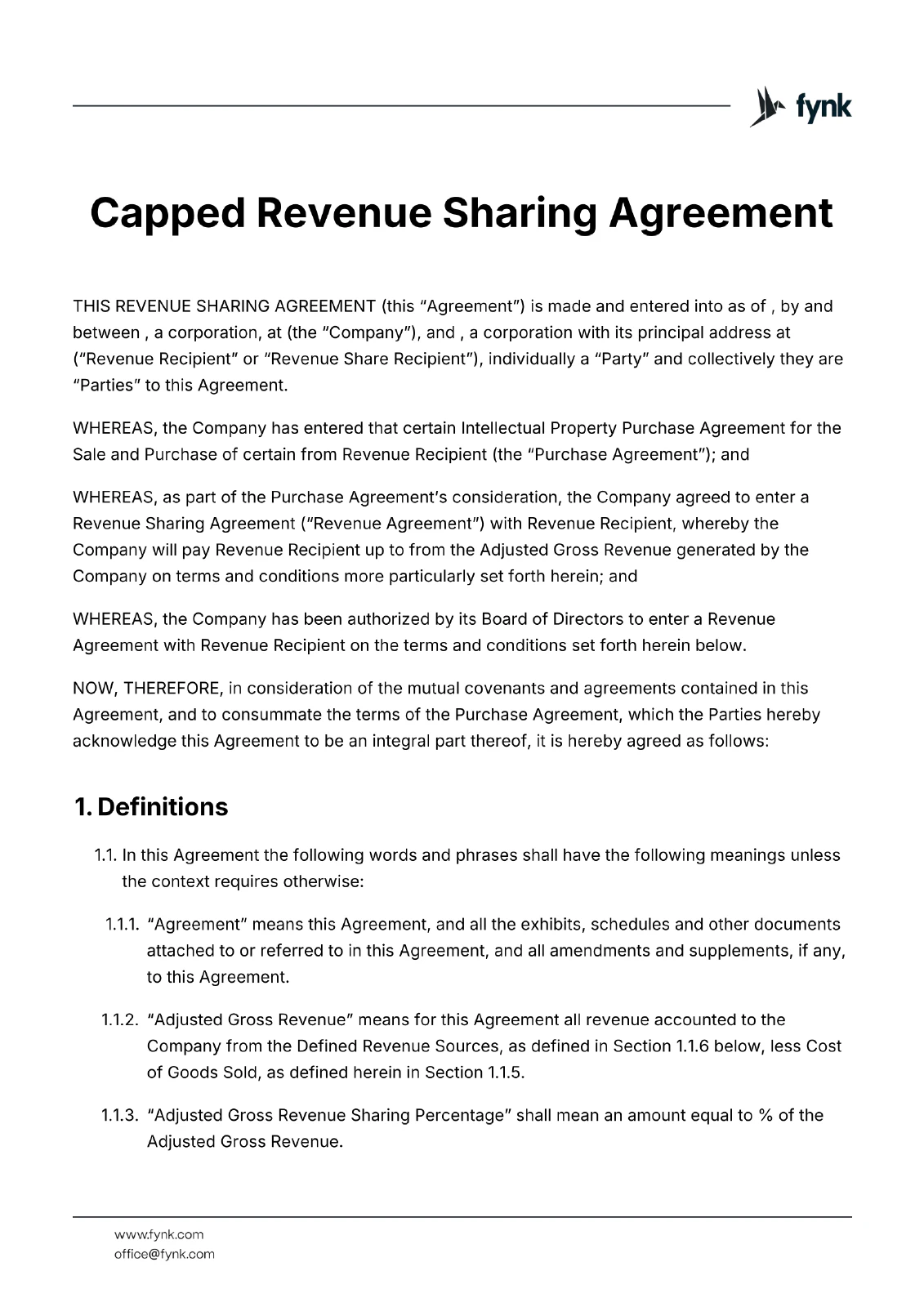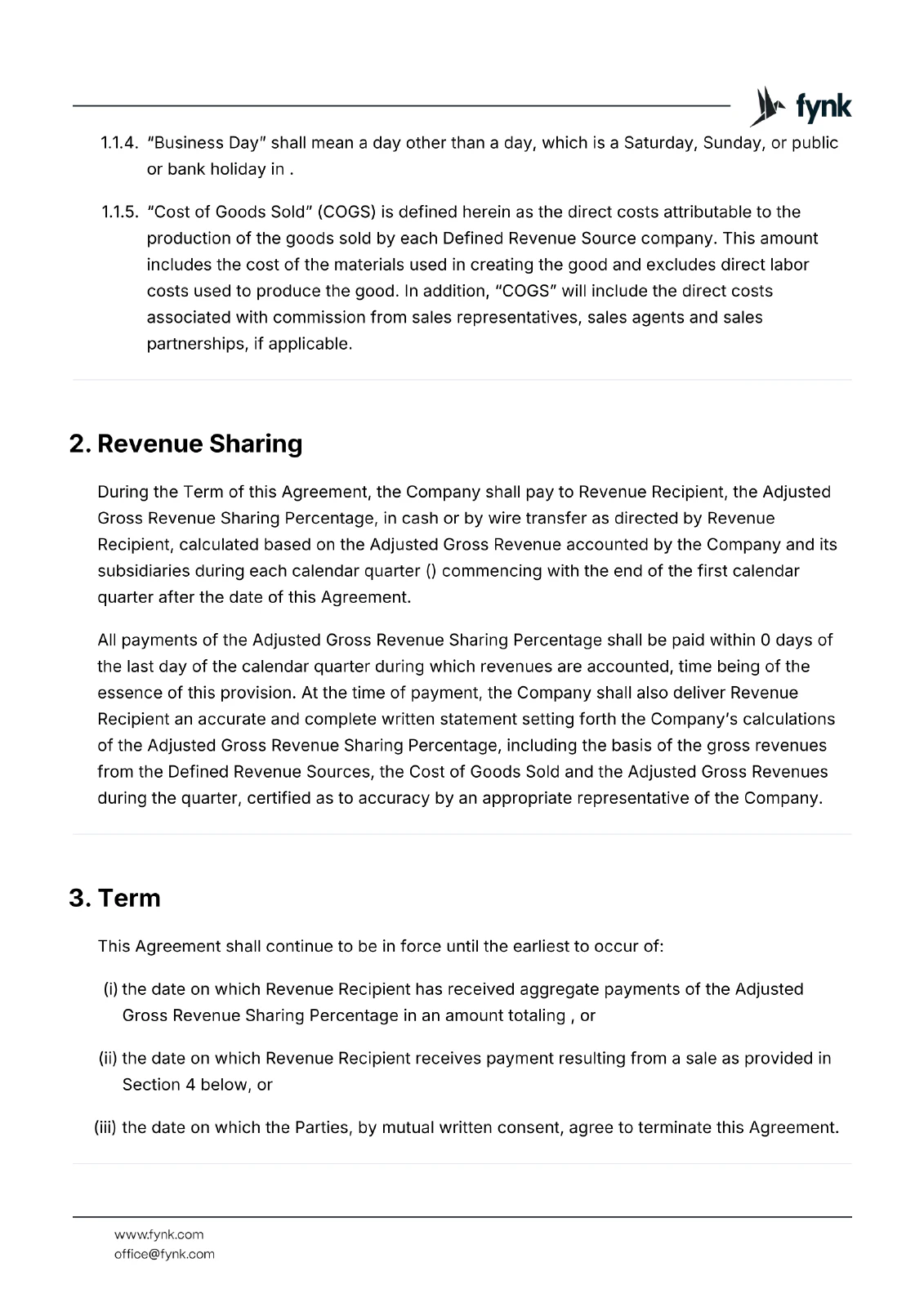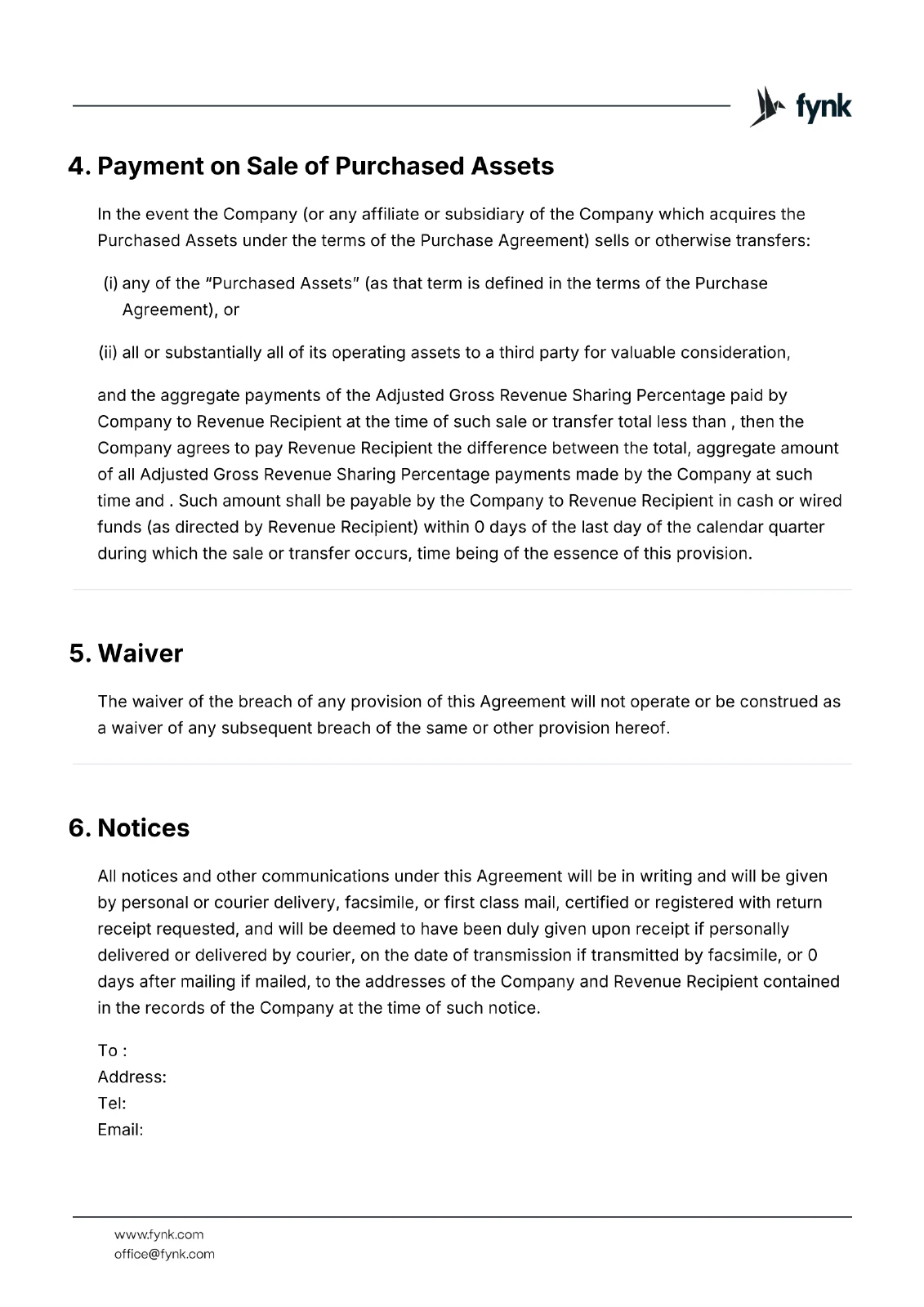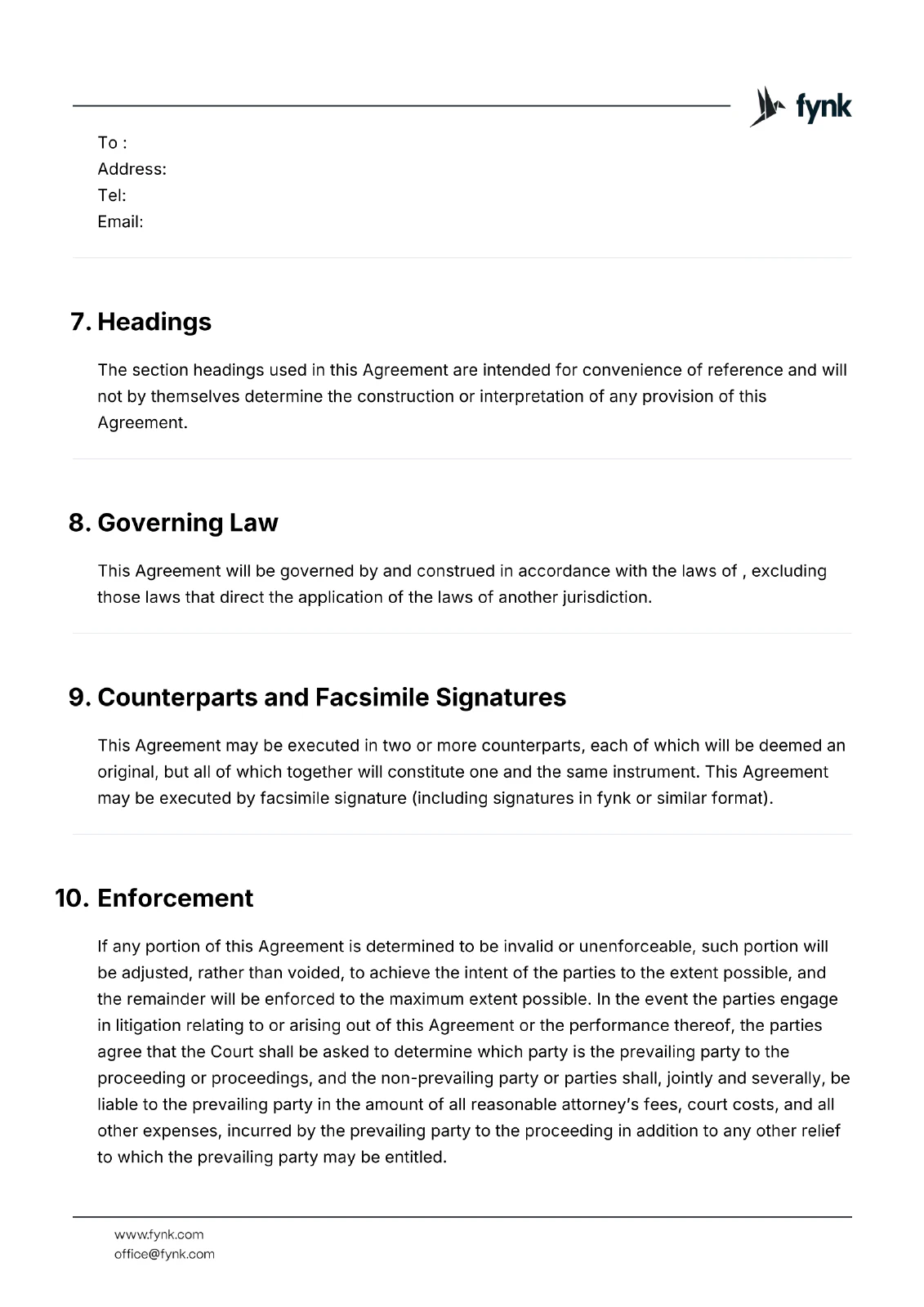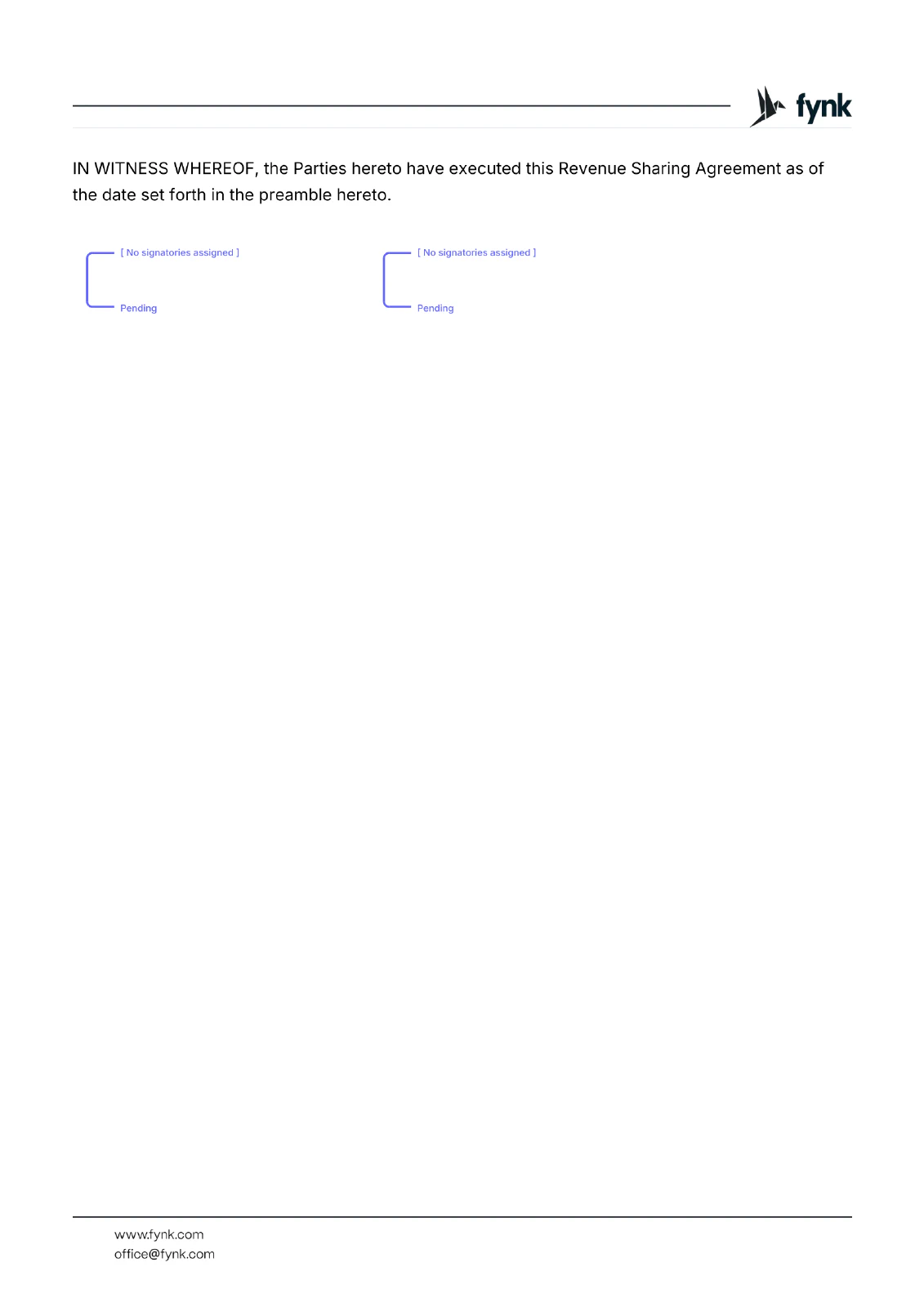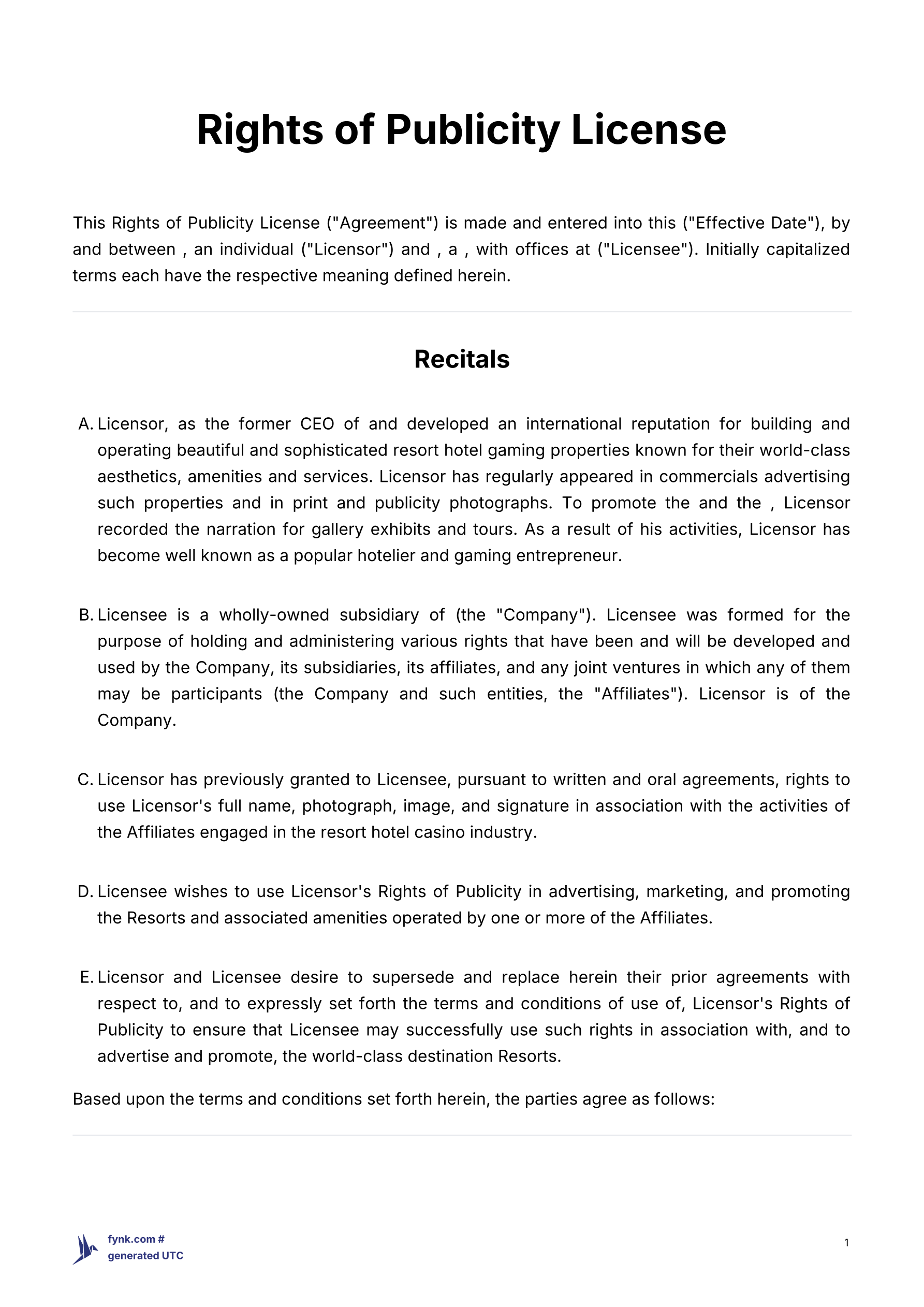Capped Revenue Sharing Agreement
THIS REVENUE SHARING AGREEMENT (this “Agreement”) is made and entered into as of , by and between , a corporation, at (the “Company”), and , a corporation with its principal address at (“Revenue Recipient” or “Revenue Share Recipient”), individually a “Party” and collectively they are “Parties” to this Agreement.
WHEREAS, the Company has entered that certain Intellectual Property Purchase Agreement for the Sale and Purchase of certain from Revenue Recipient (the “Purchase Agreement”); and
WHEREAS, as part of the Purchase Agreement’s consideration, the Company agreed to enter a Revenue Sharing Agreement (“Revenue Agreement”) with Revenue Recipient, whereby the Company will pay Revenue Recipient up to from the Adjusted Gross Revenue generated by the Company on terms and conditions more particularly set forth herein; and
WHEREAS, the Company has been authorized by its Board of Directors to enter a Revenue Agreement with Revenue Recipient on the terms and conditions set forth herein below.
NOW, THEREFORE, in consideration of the mutual covenants and agreements contained in this Agreement, and to consummate the terms of the Purchase Agreement, which the Parties hereby acknowledge this Agreement to be an integral part thereof, it is hereby agreed as follows:
Definitions
In this Agreement the following words and phrases shall have the following meanings unless the context requires otherwise:
“Agreement” means this Agreement, and all the exhibits, schedules and other documents attached to or referred to in this Agreement, and all amendments and supplements, if any, to this Agreement.
“Adjusted Gross Revenue” means for this Agreement all revenue accounted to the Company from the Defined Revenue Sources, as defined in Section 1.1.6 below, less Cost of Goods Sold, as defined herein in Section 1.1.5.
“Adjusted Gross Revenue Sharing Percentage” shall mean an amount equal to % of the Adjusted Gross Revenue.
“Business Day” shall mean a day other than a day, which is a Saturday, Sunday, or public or bank holiday in .
“Cost of Goods Sold” (COGS) is defined herein as the direct costs attributable to the production of the goods sold by each Defined Revenue Source company. This amount includes the cost of the materials used in creating the good and excludes direct labor costs used to produce the good. In addition, “COGS” will include the direct costs associated with commission from sales representatives, sales agents and sales partnerships, if applicable.
Revenue Sharing
During the Term of this Agreement, the Company shall pay to Revenue Recipient, the Adjusted Gross Revenue Sharing Percentage, in cash or by wire transfer as directed by Revenue Recipient, calculated based on the Adjusted Gross Revenue accounted by the Company and its subsidiaries during each calendar quarter () commencing with the end of the first calendar quarter after the date of this Agreement.
All payments of the Adjusted Gross Revenue Sharing Percentage shall be paid within 0 days of the last day of the calendar quarter during which revenues are accounted, time being of the essence of this provision. At the time of payment, the Company shall also deliver Revenue Recipient an accurate and complete written statement setting forth the Company’s calculations of the Adjusted Gross Revenue Sharing Percentage, including the basis of the gross revenues from the Defined Revenue Sources, the Cost of Goods Sold and the Adjusted Gross Revenues during the quarter, certified as to accuracy by an appropriate representative of the Company.
Term
This Agreement shall continue to be in force until the earliest to occur of:
the date on which Revenue Recipient has received aggregate payments of the Adjusted Gross Revenue Sharing Percentage in an amount totaling , or
the date on which Revenue Recipient receives payment resulting from a sale as provided in Section 4 below, or
the date on which the Parties, by mutual written consent, agree to terminate this Agreement.
Payment on Sale of Purchased Assets
In the event the Company (or any affiliate or subsidiary of the Company which acquires the Purchased Assets under the terms of the Purchase Agreement) sells or otherwise transfers:
any of the “Purchased Assets” (as that term is defined in the terms of the Purchase Agreement), or
all or substantially all of its operating assets to a third party for valuable consideration,
and the aggregate payments of the Adjusted Gross Revenue Sharing Percentage paid by Company to Revenue Recipient at the time of such sale or transfer total less than , then the Company agrees to pay Revenue Recipient the difference between the total, aggregate amount of all Adjusted Gross Revenue Sharing Percentage payments made by the Company at such time and . Such amount shall be payable by the Company to Revenue Recipient in cash or wired funds (as directed by Revenue Recipient) within 0 days of the last day of the calendar quarter during which the sale or transfer occurs, time being of the essence of this provision.
Waiver
The waiver of the breach of any provision of this Agreement will not operate or be construed as a waiver of any subsequent breach of the same or other provision hereof.
Notices
All notices and other communications under this Agreement will be in writing and will be given by personal or courier delivery, facsimile, or first class mail, certified or registered with return receipt requested, and will be deemed to have been duly given upon receipt if personally delivered or delivered by courier, on the date of transmission if transmitted by facsimile, or 0 days after mailing if mailed, to the addresses of the Company and Revenue Recipient contained in the records of the Company at the time of such notice.
To :
Address:
Tel:
Email:
To :
Address:
Tel:
Email:
Headings
The section headings used in this Agreement are intended for convenience of reference and will not by themselves determine the construction or interpretation of any provision of this Agreement.
Governing Law
This Agreement will be governed by and construed in accordance with the laws of , excluding those laws that direct the application of the laws of another jurisdiction.
Counterparts and Facsimile Signatures
This Agreement may be executed in two or more counterparts, each of which will be deemed an original, but all of which together will constitute one and the same instrument. This Agreement may be executed by facsimile signature (including signatures in fynk or similar format).
Enforcement
If any portion of this Agreement is determined to be invalid or unenforceable, such portion will be adjusted, rather than voided, to achieve the intent of the parties to the extent possible, and the remainder will be enforced to the maximum extent possible. In the event the parties engage in litigation relating to or arising out of this Agreement or the performance thereof, the parties agree that the Court shall be asked to determine which party is the prevailing party to the proceeding or proceedings, and the non-prevailing party or parties shall, jointly and severally, be liable to the prevailing party in the amount of all reasonable attorney’s fees, court costs, and all other expenses, incurred by the prevailing party to the proceeding in addition to any other relief to which the prevailing party may be entitled.
IN WITNESS WHEREOF, the Parties hereto have executed this Revenue Sharing Agreement as of the date set forth in the preamble hereto.

